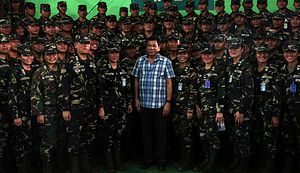Last week, Philippine officials confirmed that the defense department had finally awarded Brazilian aircraft manufacturer Embraer a key, longstanding contract to supply its air force with new close air support aircraft. The development marks some much-needed progress by the Southeast Asian state in a key item for its air force modernization after repeated delays.
As I have noted previously, though the Philippine Air Force (PAF) has detailed its plan for its requirements as part of the three-horizon military modernization process of the Armed Forces of the Philippines (AFP), the PAF had seen several delays prevent it from getting what it urgently needs. Meanwhile, the country is confronting various threats, including from the Islamic State and affiliated groups as demonstrated by the siege in the southern Philippine city of Marawi that erupted in May (See: “Where is the Philippines’ Air Force Modernization Under Duterte”).
A case in point was a key project for the PAF under the First Horizon for six new close air support (CAS) aircraft, initially costing 4.96 billion pesos ($99 million), to replace the PAF’s aging Boeing (Rockwell) OV-10 Bronco turboprop attack planes. Those planes had been used in the AFP’s fight against Islamic State-linked militants in the southern part of the country.
The longstanding CAS requirement, which is expected to be supplemented by more aircraft in the Second Horizon as well, had initially seen several delays, with the DND having to launch the bid four times over two years. But some inroads were finally seen in June 2017, when Embraer was selected as the lowest bidder. At the time, Philippine defense officials had suggested that with the bid approved, it would now move toward post-qualification evaluation and then contract negotiations, which might be finalized by the end of 2017.
On November 30, both Philippine defense officials and Embraer confirmed in separate statements that notification had been communicated to proceed with the deal. The DND said the aircraft were intended to be “the primary close air support of the PAF.” Though it did not specify exactly what the aircraft would be used for, there are no shortage of uses given the defense challenges that the AFP faces, including twin insurgencies in the southern part of the country and the continued threat of terrorism.
Embraer said in its statement that once the Super Tucano was delivered, which would be a process that begins in 2019, the aircraft would be turned over and maintained by the 15th Strike Wing of the PAF and would be deployed for “close air support, light attack, surveillance, air-to-air interception, and counterinsurgency missions.” That would make the Philippines the second operator of the aircraft in the Asia-Pacific, the company said (the other is fellow Southeast Asian state Indonesia).

































